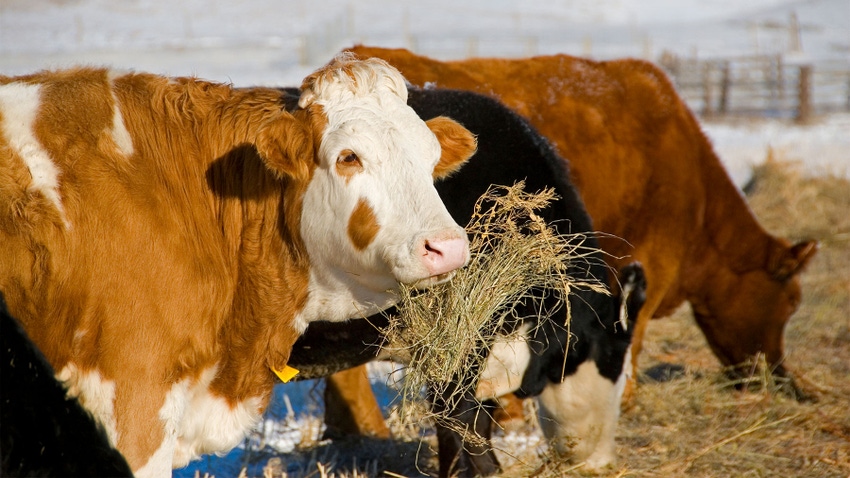February 16, 2024

Beef producers may find themselves asking “what to feed when there is no feed,” says Eric Bailey, University of Missouri Extension beef nutrition specialist.
Post-drought feeding continues to plague the Midwest. Bailey says in Missouri, the severity of the drought in 2022 and 2023 may have been underrated.
Regions of the state faced precipitation deficits of 12 to 20 inches in mid-November before entering winter — typically the driest season of the year. Mid-Missouri was among the hardest-hit areas, with 80% less precipitation than normal, but drought ravaged pastures throughout the state.
Effects of those deficits continue to carry over for the 43,000 Missouri cattle farms and ranches. With farmers facing limited hay supply, they look for other feed options. Bailey says beef producers should strive to keep winter feeding costs to $5 or less per cow per day.
Bailey offers these tips for stretching your feed during the next few months:
Search for a deal. Check out MU Extension’s new Feedstuff Finder. The platform helps producers and consumers of feedstuffs find one another, cut transportation costs and manage tight winter feed supplies when feed costs and availability can be volatile.
Related: New app brings livestock feed to your fingertips
Switch up the menu. Based on your budget, consider the cost of feeding hay versus corn. Bailey says corn prices are low at the present and prices are high for hay, even poor-quality hay that may not offer good nutrition. Put a pencil to it, and figure out which provides the most nutrition for the dollar.
Reduce hay waste. Consider hay feeders. Research shows that feeding without some type of hay feeder can result in upward of 45% to 57% waste, depending on type and number of animals. Another way is to feed less hay more often.
Investing in farm infrastructure. This might be a good time to consider investing in covered storage for hay to reduce waste. Fences and watering systems can allow grazing of cornstalks.
Get a mixer. Can feed savings offset paying for a mixer? Assuming you have a tractor, you can save $50 per cow. “Even if you have 100 cows, that’s a huge savings,” Bailey says.
Search for silage. You can feed corn silage without a mixer as a high-nutrient, high-waste alternative. Exposure to air increases spoilage and decreases feed value and palatability. Knowing how the silage was put up will help you determine if it is good value. If it smells like dirty feet, walk away.
Find dry deals. Calculate dry ton costs for the best deal. Corn silage at $80 per ton and at 35% dry matter amounts to $228.57 per dry ton. Corn at $5.32 per bushel is $223.54 per dry ton, and soyhulls at 13 cents per pound is $288.88 per dry ton.
Consider feeding cornstalks. You will need fencing and a water supply to graze cornstalks. Limit cows to grazing cornstalks for two months or less and allow an acre per cow per month. Protein intake is limited after the first 30 days on the same field as cows eat their way through leaves, husk and, finally, stalks and cobs. Also, consider soil compaction caused by grazing cattle.
Know your cow’s nutrient needs
The nutrient value of grazed cornstalks diminishes with time and needs to be supplemented. Bailey recommends supplementing with 5 pounds of a 14% commodity mix per cow per day. The goal is to get 0.75 pound of crude protein per cow per day.
Bailey urges producers to look at their total mixed ration to ensure that cattle receive adequate nutrition for good health, milk production and reproduction in the days ahead. Total digestible nutrient needs differ for lactating (62%) and dry cows (55%).
Feed cows based on nutrient requirements, rather than appetite. Ask if bellowing cows are hungry or just wanting, he says. Limit intake slightly — from 2.5% to 2.0% of body weight per day. Bailey notes that small reductions such as this should lower your feed bill but not adversely affect the cow’s health.
To learn more about calculating winter feed costs for beef cows, visit extension.missouri.edu. You may also contact your regional MU Extension livestock specialist.
Source: University of Missouri Extension
You May Also Like




